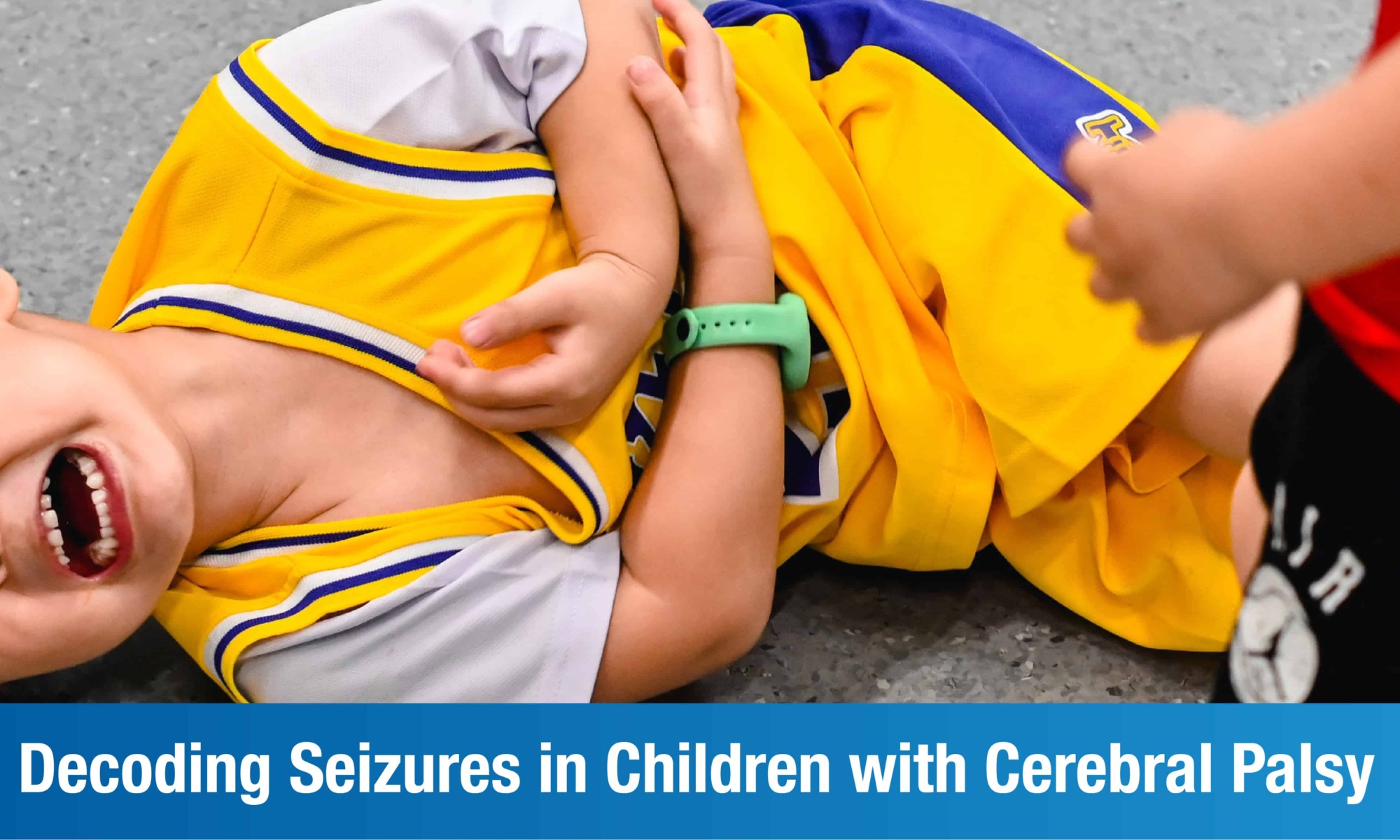
Once your child is properly diagnosed with Cerebral Palsy, most of your child’s special needs are met by doctors and therapists. No two families share the same experience when it comes to taking care of their child because Cerebral Palsy affects each child differently. Therefore, many parents feel sidelined or ill-equipped to take care of their little ones.
Caring for a Child with Cerebral Palsy
Staying abreast with the best Cerebral Palsy treatment options will give you a better understanding of what is working in favor of your child’s health and the potential success that accompanies it. Keeping track of referrals, follow-up treatments, and therapy plans proves to be a reassuring factor when treatment is suggested by the doctor. This also keeps you in sync with better managing the disorder.
Learning More About These Seizures
The Epilepsy Foundation defines a seizure as a sudden surge of electrical energy to the brain that disturbs the body for a period of time. This electrical activity is triggered by chemical changes in nerve cells that cause the body to convulse and changes behavior, feelings, and movements. In some instances, the person may even experience a loss of consciousness. Not all children with Cerebral Palsy will have seizures. The severity and symptoms vary with each child. Some may exhibit mild symptoms of a seizure — temporary confusion, a staring spell, uncontrollable twitching of the eyes and limbs. In cases where there are more severe seizures, they can manifest in the form of spontaneous shaking episodes and full-body spasms, which are distinctive to grand mal seizures.
As a parent, it is imperative to educate yourself and recognize the signs that indicate that a seizure is approaching and how best to handle the situation. Ultimately your child gets the best possible way to transition through a seizure, which can elevate their quality of life and help them harness the best of their potential.
Why Do Seizures Occur?
Anyone at any given time or age is susceptible to seizures regardless of their health. There are many reasons why seizures occur. It could be due to closed brain injury, exposure to a toxin, fever during infancy or childhood, an infection such as meningitis, a tumor, genetic factors, or a stroke. Children with Cerebral Palsy can also experience seizures because parts of their brains have sustained damage or experienced a lack of oxygen during childbirth. Seizures can be categorized as generalized or partial. Generalized seizures affect the entire brain, whereas partial seizures affect only one side or a part of the brain.
Generalized Seizures
There are different types of generalized seizures:
Tonic Seizures: This type of seizure subsides after a few minutes but it causes a sudden loss of consciousness, stiffening of the body, shaking, biting of the tongue, cuts on the inside of the cheek, and in some cases loss of bladder control. The child\’s face might bear a pale bluish pallor. After the seizure, fatigue sets in and recovery time can range anywhere from a few minutes to a few hours.
Myoclonic Seizure: This seizure is distinctive because of the involuntary jerking or twitching movements of the legs, torso, arms, and face. There are no warnings or tell-tale signs before the seizure occurs, but it generally subsides within a few seconds. Only one side of the brain is affected during the seizure.
Atonic Seizures: During this seizure, there is a temporary loss of muscle tone which could last for about a minute. The child’s head could drop and there could be a loss of control in posture, causing the child’s body to go limp and result in a fall.
Absence Seizures: In this category of generalized seizures, episodes can occur frequently and last up to 20 seconds. A child experiencing an absence seizure will exhibit symptoms such as a blank stare or eyes rolling upwards. There is typically no response from the child during the seizure, but once it subsides the child will regain full consciousness and resume activity. Absence seizures may begin in the early stages of childhood or even during their early teens, but go away by the time the child turns 18.
Guidelines to Follow
- Give the child room for movement
- Keep sharp objects out of the way. Furniture and breakables should be addressed first
- Cushion the child’s head to prevent injury
- Ensure a helmet is used if the child is prone to frequent seizures
- Do not attempt to restrain their movements or hold them down
- Avoid placing anything in the mouth to bite down on. It will damage the teeth
- Keep calm and wait for the seizure to end and for the child to fully recover, before giving them something to eat or drink
- Ride out the wave with your child and reassure them to avoid confusion and fear. Try not to leave them on their own
- Time the episode. If the length of the episode is longer than usual, do not hesitate to call the emergency services
At Plexus, we are committed to providing the best Cerebral Palsy treatment for your child. All our treatment plans are aimed at maximizing your child’s ability to live independently and look forward to improved quality of life. Cell therapy with a rigorous rehabilitation program, physiotherapy, language therapy, and speech therapy are some of the treatments offered at Plexus. For more information, guidance, or support on the best Cerebral Palsy treatment available for your child, book an appointment with us at Plexus today.










